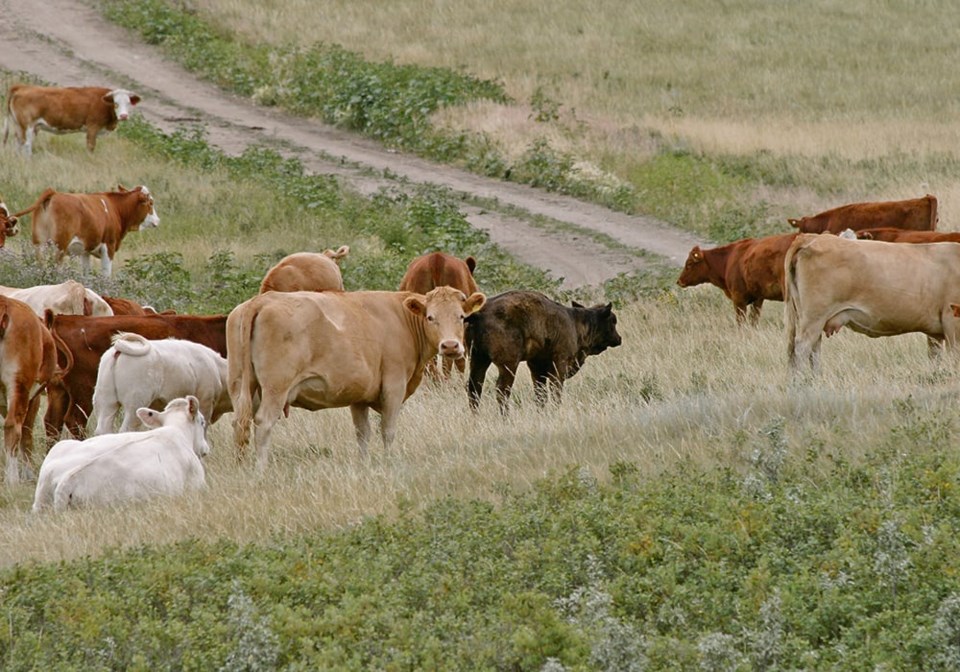WESTERN PRODUCER — The shortage of veterinarians is a problem Canadian beef industry and government officials must tackle as they develop a contingency plan in case of a foot-and-mouth outbreak, said an expert.
“We know that’s the reality, so we have to work with that reality,” said senior director Bob Burden of Serecon, a consulting company primarily focusing on animal health.
Issues include how vaccines will be given to nearby cattle herds to help contain the spread of FMD in the event of an outbreak in an area, he said during an interview.
“Where can we actually deputize people to do certain things?” he said.
“I mean, they’ve done that in Ontario with the rabies program where they’ve deputized individuals who do vaccinations. It doesn’t have to be a vet putting a needle into a hip, so it’s what can we do in order to leverage the reality that we have?”
The recent federal budget allocated $57.5 million over five years to the Canadian Food Inspection Agency to create a vaccine bank for FMD and develop response plans. The disease was discussed by a panel Aug. 16 at the Canadian Beef Industry Conference in Calgary.
It’s likely only a matter of time before there is an outbreak, “whether it’s one year, or five, or 10,” said panel member Jacob Bueckert, chair of the Alberta Cattle Feeders’ Association. “The scariest part is we are an exporting nation and we export way more cattle than we slaughter,” he said during an interview.
“It’s very similar to the situation with BSE where if the border does close, with the U.S. 小蓝视频 protectionist … that would really wreak havoc in our industry, and these animals are very expensive and we just don’t have the slaughter capacity to deal with them.”
A member of the audience asked how surveillance against the disease will be undertaken given Canada’s shortage of veterinarians, pointing to what happened in the United Kingdom in 2001. FMD had already spread across much of that country by the time it was detected.
It led to a cull of millions of cattle, pigs and sheep on thousands of farms.
“If that happened anywhere in Canada and we were three weeks without a diagnosis of foot-and-mouth, we would have contaminated North America, just like (the U.K.) contaminated the entire place.”
Burden, who is also part of the Animal Health Emergency Management project at Animal Health Canada, said he is working with officials who are looking into the problem.
“The issue around access and knowing how to implement and survey animals, etc., is what we’re struggling with right now in advance of the outbreak,” he said.
“What we need to know… is to try to figure out what are the minimum requirements that CFIA would have in order to be able to say to the rest of the world that we have done the surveillance necessary.”
Canadian officials are also working with the United States to “figure out what that might look like so that we could get back into the market as quickly as possible because we are doing appropriate surveillance.”
Burden said there is a “lot of scary stuff out there, but the good news is we’re starting to look at those things and try to come to some protocols in advance so we would know what we would have to do, and back to what you’re doing in your feedlot, to make sure that we’re serving these animals appropriately given the risks that we’re facing.”
Another problem is how surveillance will work in community pastures that are shared by cattle from several beef producers, he said.
“How do you vaccinate those types of animals?”
There are commonsense measures that producers can take to help prevent the spread of diseases to their livestock, said panel member Erika Stewart, who is the provincial co-ordinator for the Verified Beef Production Plus program in Saskatchewan.
They include having a pair of chore boots that never leaves the farm, reducing the chance of tracking illnesses through sources such as manure, she said.
“We’re not going to have like 20 pairs of muck boots to go and do all our different activities — but wash them. Water and bleach is a simple solution.”
Burden said there are also workbooks or handbooks that can help ranchers plan how to respond to disease-related events before they are caught flat-footed by an outbreak. An example is the Producer Handbook released in 2018 by Alberta Beef Producers (https://bit.ly/44cHYyN).
He also recommended using templates to create a site map of the farm, a contact list to quickly get in touch with people such as officials in case of FMD or other emergencies, and a visitor log.
“I do a lot of work right now with avian influenza, and one of the things that’s most frustrating for farmers is you can’t get certainty until you’ve given a bunch of information,” he said.
“And when the agency walks onto your farm, they’re going to be asking you for… who’s been on your farm, where do they come from, where else have they gone, because they have to do the trace out.”
You can no longer count on social media to deliver important news to you. Keep your news a touch away by bookmarking SASKTODAY.ca's homepage at this link.
Here's why you should bookmark your favourites.
Subscribe to SASKTODAY.ca newsletter to get our daily news to your inbox.




